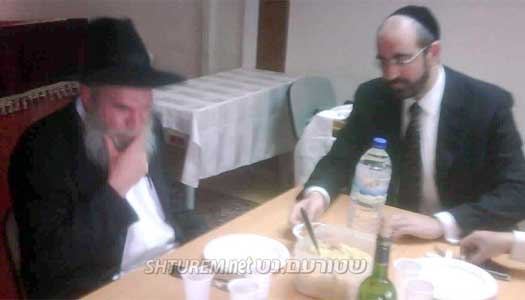
Susie Fishbein Demonstrates Passover Cooking at Chabad
With Passover just around the corner, Passover cooks are scratching their heads for a tastier way to prepare the Seder and festive meals despite the holiday’s considerable dietary restrictions.

With Passover just around the corner, Passover cooks are scratching their heads for a tastier way to prepare the Seder and festive meals despite the holiday’s considerable dietary restrictions.

A group of Yungerlite organized a Melava Malka and Chassidishe Farbrengen this past Motzai Shabbos where the newly released JEM video of the Farbrengen with the Rebbe in honor of the ‘Shnash Hashmoinim’ was played.

The Rohr Jewish Learning Institute and TorahCafé.com are proud to announce the broadcast of their annual Passover Webcast: “How to Exodus in 2011.” This Webcast brings together some of the most captivating, comical and inspiring video ever produced by JLI and TorahCafé. It is truly a not-to-be-missed web event!

Beginning now, 7:00pm, a truck is unloading a number of skids with fresh Carrots and Onions and is being distributed for free for all those who want. The produce is being distributed on East New York Avenue between Kingston and Brooklyn. There is no need to be on any lists, just come and take.

MONTREAL [CHI] — Five Mitzvah Tanks paraded through the streets of Montreal in honor of Yud Alef Nissan, marking the Rebbes 109th birthday. This parade was the first one taking place this year.
Avremi Rosenthal (Crown Heights) and Shayal (Chayale) Rabinowitz (Montreal, Canada)
Beis Levi Yitzchok, 556 Crown St [entrance on Albany Ave]
Mendy Cohen (London, UK) and Simi Gutnick (Crown Heights)
Lubavitcher Yeshiva, 570 Crown St [hall entrance on Albany Ave]
Levi Groner (Melbourne, Australia) and Chayale Weingarten (Grand Rapids, Michigan)
JCM, 792 Eastern Pkwy [corner Kingston Ave]
Hershie Lazarus (Las Vegas, NV) and Chanie Shepherd (Oak Park, MI)
Lubavitcher Yeshiva, 570 Crown St [hall entrance on Albany Ave]
Peretz and Devorah Leah (nee Levy) Chein (Crown Heights)
Hershie Lazarus (Las Vegas, NV) and Chanie Shepherd (Oak Park, MI)
L’Chaim today, Sunday at Lubavitcher Yeshiva
570 Crown St [hall entrance on Albany Ave]
EAST FLATBUSH [CHI] — A Sunday morning two alarm fire destroyed Oholei Torah’s East Flatbush head start division building.
Marking the end of the month of Adar, Reb Issac Bitton got together with a group of Bochurim and Yungerlite for a Motzai Shabbos Melava Malka and jam session at Aliyah.

Chabad-Lubavitch of Athens and the University of Georgia will host what is believed to be the largest gathering of Jews in the school’s 225 year history.

Hundreds of law enforcement officials from across the tri-state area are concluding a week-long exercise aimed at detecting and preventing radioactive material from coming into the city.
From the Safer Haminhagim: [Every day from Rosh Chodesh Nissan until the twelfth of the month, usually after Shacharis,] one reads the passage [from Bamidbar 7-8:4] that describes the offering brought on that day by a particular Nasi, or tribal prince, for the dedication of the altar of the Mishkan. [In common parlance, each day’s passage itself is often referred to as “the Nasi.”] This daily reading is followed by the prayer which opens with the words yehi ratzon (and which appears in Siddur Torah Or [as well as in Siddur Tehillat HaShem, p. 371]). This prayer is recited even by a Kohen or a Levi [despite its seeming relevance only to tribes other than the Tribe of Levi]. [284]

More than four months have passed since the arrest of R’ Eli Hecht in Spain, after being duped into carrying a drug-laden suitcase for a ruthless individual. The committee members worked tirelessly with lawyers to get him released to house arrest before Pesach.
Education comes in many forms: First and foremost is to provide a living example. The best way to influence someone is by practicing what you preach. But in order to prevail upon a student to adopt a basic level of good behavior, the educator must show an example many times above the standard, because the student automatically assumes that he can’t be as great as his teacher, who is much older and wiser than he.

The Bureau of Democracy, Human Rights and Labor of the U.S. Department of State has noted that the number of acts of anti-Semitism in 2010 in Ukraine has decreased.The U.S. Department of State said this in the “2010 Human Rights Reports: Ukraine” published on its Web site on April 8.
A number of security lapses in an airport shuttle system in New York is raising concerns among some Port Authority officers and state senators.